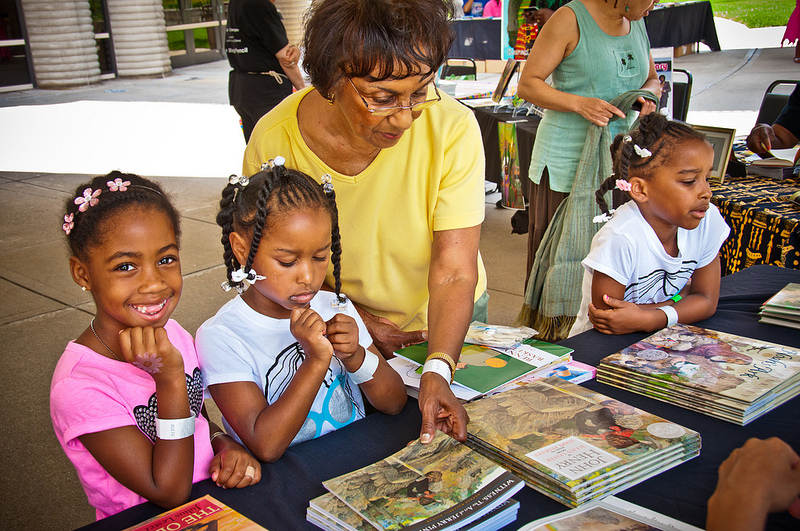
Reading is a foundational skill for all of life. Without proper proficiency in reading and comprehension, your child can’t progress through school or enjoy an independent lifestyle. Learning to recognize letters and put together words is so important, people have devised many methods for how to teach kids to read.
Phonics is a popular approach to literacy education and can help kids grasp the basics of language. Your kids need strong reading skills to be successful and productive, and phonics games act as powerful tools to put them on the right path.
U.S. Literacy Rates for Children
The National Education Association reports only 53 percent of children ages three to five were being read to daily by family members in 1999. This low number may be due in part to the low literacy rate among U.S. adults. Statistics from the Literacy Project Foundation show 44 million adults lack the skills necessary to teach their own children how to read.
When kids are read to three to four times per week, 26 percent of them are able to recognize the entire alphabet. However, such regularity is rare in U.S. homes, as is demonstrated by the 25 percent proficiency rate among children in fourth grade. By the time these kids become adults, only 50 percent of them will be able to understand books written at an eighth grade level or above.
The Importance of Learning How to Read
You can see from these literacy statistics how crucial reading education is for children. A functional level of literacy is required to:
- Shop for necessities
- Communicate clearly
- Participate in community and religious activities
- Understand instructions at school and at work
- Pursue a successful career path
When you make reading a priority in your child’s life, you provide him or her with the tools to accomplish these basic tasks and pave the way for the development of advanced skills. Proficient readers are better at logical and critical thinking because reading teaches them to understand abstract ideas. As a result, they become more skilled in academics and many areas of life.
The Economic Impact of Not Being Literate
Literacy statistics show a reduction of nearly 50 percent in adult literacy in the U.S. between the years just prior to World War II and the mid-1990s, and illiteracy has a profound effect on the economy. Welfare, job incompetence and other costs related to functional illiteracy add up to $224 billion per year. Businesses lose time, money and customers to avoidable errors. Illiterate adults make anywhere from 30 to 42 percent less than their literate peers and lack the ability to engage with the technologies now being used in many industries.
Teaching Kids to Read: “Back to the Basics”
Getting your child started on the road to reading doesn’t have to involve a complex program or fancy educational materials. Begin simply with a few basics:
- Provide infants with stimulating board books
- Read to children of all ages daily
- Help kids recognize letters they see every day
- Have older children read books to you
- Ask questions as you read
- Build familiarity with common “sight words”
Spending some of your own leisure time reading also provides encouragement because kids will want to share in the enjoyment they see you getting from books.
A Case for Phonics
When it comes to how to teach kids to read, many educators prefer to start with phonics. Phonics encompasses the basic “rules” of how words work, from basic letter sounds to the way pairs and groups of letters sound together.
Starting your kids out with phonics helps them understand the basic concepts behind language. It establishes letter recognition at a young age and teaches associations between the sounds of letters and the mechanics of words. Knowing these basics provides the foundation for learning to sound out unfamiliar words and allows kids to become strong, independent readers.
Phonics Games and Online Apps
Even though it’s an essential skill, reading shouldn’t feel like a chore. Use games and apps to engage your kids in their own reading education and associate words with fun. Simple games like word or letter bingo or challenging kids to fill in missing sounds in written words build basic skills of association.
For more fun in the digital realm, try websites like KizPhonics or Education.com. Let kids play with abc PocketPhonics, AlphaTots, Hooked on Phonics Learn to Read and other apps for mobile devices. These games seem like simple amusements, but kids pick up new reading skills every time they play.
Take-a-Ways
By integrating reading lessons into every area of life, you start your kids off on the right path for academic and professional success. Phonics, collaborative reading and traditional reading education work together to build a strong foundation and foster independence. A dedication to the written word has the power to transform kids’ lives and causes a positive ripple effect in all areas of society in which they work, live and interact.
Image Credit: Knight Foundation
